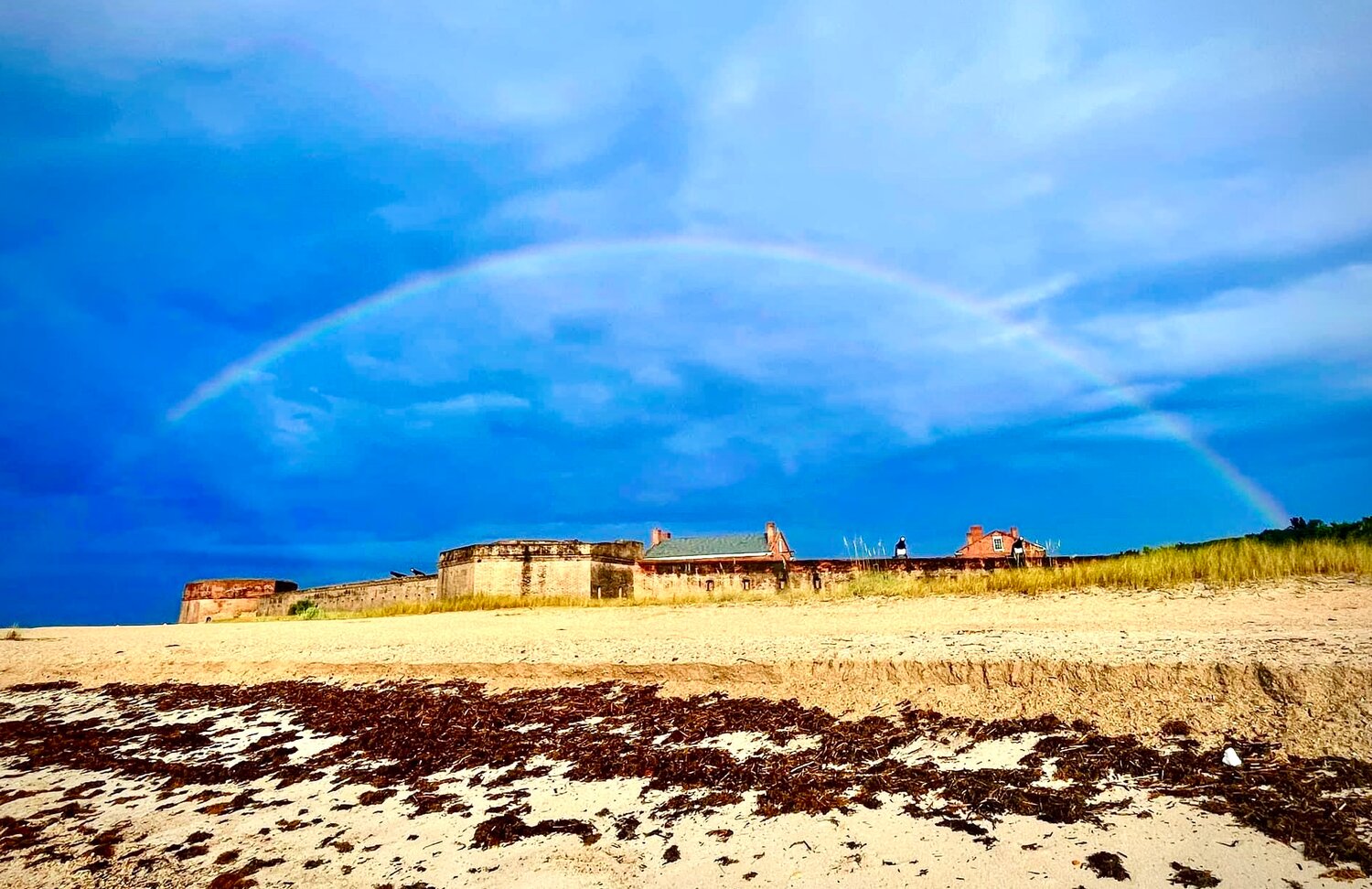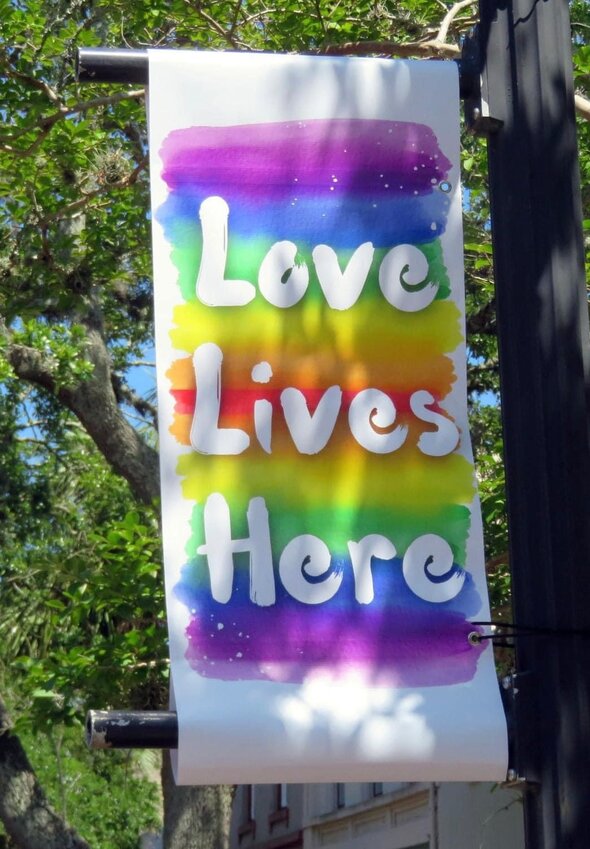How the Rainbow Teaches a People to Hope
Do you know who Roy G Biv is? He is not running for city commission! He teaches us the colors of the rainbow: Red, Orange, Yellow, Green, Blue, Indigo, Violet. Maybe you heard his name sung in a song about the rainbow colors in order, or sung it with your children or grandchildren. Knowing the rainbow colors and how they blend and complement each other is essential knowledge for artists. Fortunately, we have color wheels to help us recognize the patterns.
We see quite a few rainbows on our island. Big skies and frequent rain showers with lots of clouds help them happen. Rainbows are made when light is refracted through water droplets. The white light breaks into a spectrum of colors. I share with you a lovely shot taken by my friend Sara with a rainbow over Fort Clinch.
Today is the last day of Pride month. I thought I would refract some light on how the rainbow became associated with the Pride movement.
The story of the rainbow in the Hebrew Bible is found in the first book in Genesis 9. After the flood, God promises to Noah and all people everywhere never to destroy the earth again. The rainbow appeared in Hebrew literature as a sign of hope. The same symbol was found in other ancient cultural narratives. How can this be?
For some Christians, the Bible is the literal and inerrant Word of God. In their understanding, Moses wrote Genesis. Other Christians take into account contemporary historical and scholarly research. They understand that unnamed Hebrew scribes painstakingly composed Genesis, gathering some of the themes from literatures known to them. They weren’t just reciting history. They formed a meaningful narrative to help the Jews who survived the Exile to Babylon and returned to a devastated Judah to know who they were and how they were supposed to become a community. The writers were posing a crucial question. “What is our purpose now as remnant people of a defeated nation?” The rainbow offered them a sign of hope that they would not be destroyed again. In this way, the Jewish identity was formed around community-building and has endured to this day.
I like to think of the biblical narrative the way theologian Marcus Borg teaches in his very useful book, “Reading the Bible Again for the First Time.” He says, “The Bible doesn’t have to be literally true to be REALLY true.”
Before the PRIDE movement began, a symbol by which the LGBTQ community was labeled was a pink triangle. Adolf Hitler invented this derogatory symbol to label the gay community just as the yellow Star of David labeled Jews. After the Stonewall riots in New York City in 1969, the gay community began to form a new and more positive identity. In the late 1970s, the growing gay community needed a new symbol. Gilbert Baker, a young activist and artist in San Francisco, was encouraged by Harvey Milk and other friends to come up with a symbol that could be a flag for their emerging identity. On an evening out, dancing under the psychedelic lights popular at that time, the inspiration struck him. A rainbow flag could represent joy and hope for the gay community!
He designed one, which flew over city hall in San Francisco for the first time in 1978. The rainbow flag has come to represent inclusion and diversity. It now comes in many forms, including one that also expresses solidarity with the trans community.
During Pride month, the executive committee of Fernandina Pride got a permit to provide signpost flags using the rainbow symbol to add to the banner over Eighth Street, for which they always have a permit. The committee chose the hopeful and inclusive message for the banners: “Love Lives Here.” They received overwhelmingly positive feedback about the banners and plan to use them again next year.
I hope the colorful, joyful, hopeful and inclusive symbol of the rainbow guides and galvanizes us as a community, just as it did for the ancient Hebrew nation.







